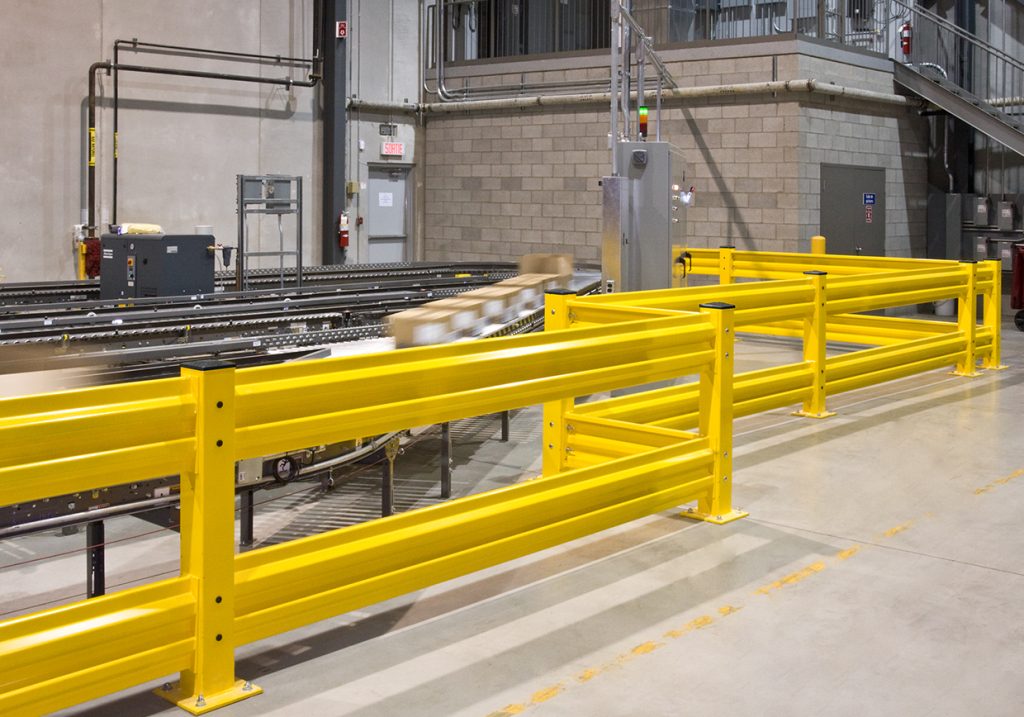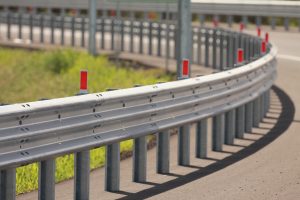Road safety is a critical concern for all drivers and passengers. The number of accidents that occur each day is staggering, and the consequences can be devastating. However, there are measures in place that help prevent accidents and protect lives. Guard rail, often overlooked and underappreciated, play a crucial role in ensuring road safety.
In this blog post, we will explore the importance of guard rails and how they save lives on our roads.
Understanding the Purpose of Guard Rails
Guard rails are physical barriers installed alongside roads and highways to protect drivers and passengers from serious accidents. They are typically made of strong materials such as steel or concrete and are designed to withstand immense impact forces. Guard rails are strategically placed in areas where the risk of accidents is high, such as sharp curves, steep slopes, or bridges.
The primary purpose of guard rails is to prevent vehicles from leaving the road. By acting as a barrier, they keep vehicles on the designated path, reducing the risk of rollovers, crashes into obstacles, or falling down steep slopes. In essence, guard rails serve as a protective shield that keeps vehicles and their occupants safe.
Preventing Vehicles from Leaving the Road
Imagine driving on a winding mountain road with no guard rails. One small miscalculation or moment of distraction could result in a catastrophic accident. Guard rails are the unsung heroes that prevent such disasters from happening. They act as a physical barrier, guiding vehicles and ensuring they stay on the road.
When a vehicle veers off the road, the consequences can be severe. Rollovers are common, and the impact forces involved can cause significant damage to the vehicle and its occupants. Furthermore, crashing into obstacles such as trees, lampposts, or buildings can lead to life-threatening injuries. Guard rails play a vital role in minimising these risks by keeping vehicles firmly on the road.
Additionally, guard rails prevent vehicles from falling down steep slopes. In mountainous regions or areas with significant height differences, a momentary lapse in concentration can result in a vehicle plunging down a ravine. The presence of guard rails acts as a safeguard, preventing such accidents and potentially saving lives.
Absorbing Impact Energy
Guard rails are not just passive barriers; they are intelligently designed to absorb impact energy during a collision. When a vehicle collides with a guard rail, the rail’s structure is engineered to distribute the forces of the impact more evenly. This feature helps reduce the severity of the accident and mitigates the risk of life-threatening injuries.
The energy absorption capability of guard rails is crucial in protecting both the vehicle occupants and other road users. By dissipating the forces of the collision, guard rails help prevent the vehicle from abruptly coming to a stop, which could lead to severe injuries or fatalities. Instead, the guard rail absorbs and redirects the energy, minimising the impact on the vehicle and its occupants.
Furthermore, guard rails help prevent secondary collisions. In situations where a vehicle collides with a guard rail and rebounds back onto the road, the guard rail acts as a buffer, preventing the vehicle from colliding with other oncoming traffic. This feature is particularly important in preventing chain reaction accidents on busy roads.
Redirecting Colliding Vehicles
While preventing vehicles from leaving the road is the primary purpose of guard rails, certain types of guard rails are designed to redirect colliding vehicles back onto the road. These guard rails are often referred to as “crash cushions” or “impact attenuators.”
When a vehicle collides with a crash cushion guard rail, the rail’s design allows it to deform and absorb the impact forces. This deformation helps slow down the colliding vehicle gradually, redirecting it back onto the road. By doing so, the risk of head-on collisions or side impacts with other vehicles is minimised, significantly reducing the severity of the accident.
Crash cushion guard rails are commonly installed in areas where high-speed traffic is present, such as highways or busy intersections. Their ability to redirect colliding vehicles has proven to be effective in preventing catastrophic accidents and saving lives.
Enhancing Visibility and Awareness
In addition to their physical protection, guard rails also play a role in enhancing visibility and awareness on our roads. Guard rails are often painted in bright colors, making them more visible, especially during adverse weather conditions or at night. This increased visibility helps drivers stay on track and avoid potential accidents.
Moreover, the presence of guard rails serves as a constant reminder for drivers to stay alert and cautious while driving. Seeing guard rails along the road reinforces the idea that they are driving in an area where extra caution is required. This visual cue helps promote safe driving practices, reducing the likelihood of accidents caused by negligence or recklessness.
Conclusion:
Guard rails are not just mere barriers alongside our roads; they are lifesavers. Their purpose goes beyond preventing vehicles from leaving the road; they absorb impact energy, redirect colliding vehicles, enhance visibility, and remind drivers to stay vigilant. Understanding the importance of bollard and appreciating their role in saving lives is crucial for all road users.
Next time you drive past a guard rail, take a moment to reflect on the countless lives that have been protected by these unsung heroes of road safety.







